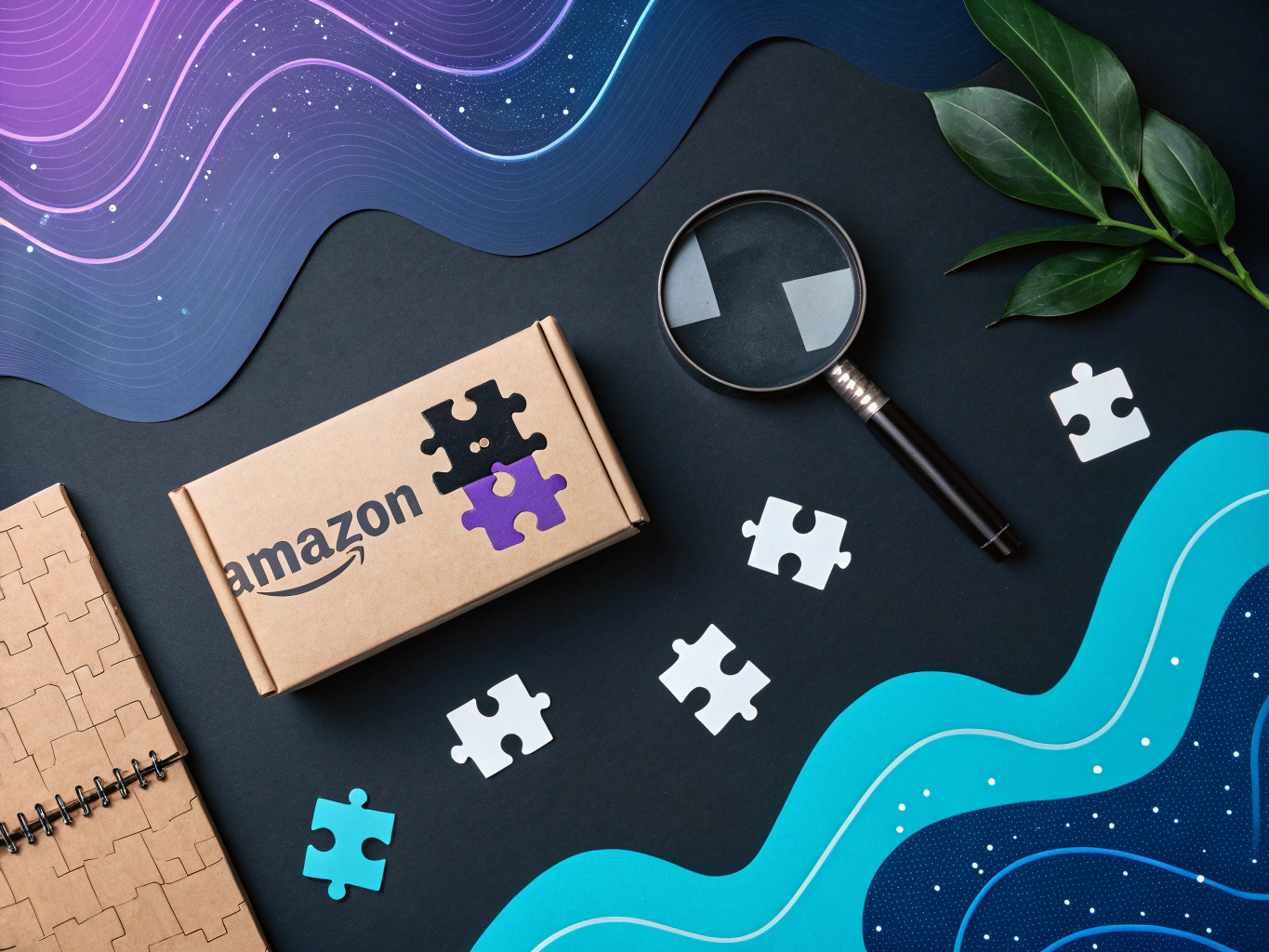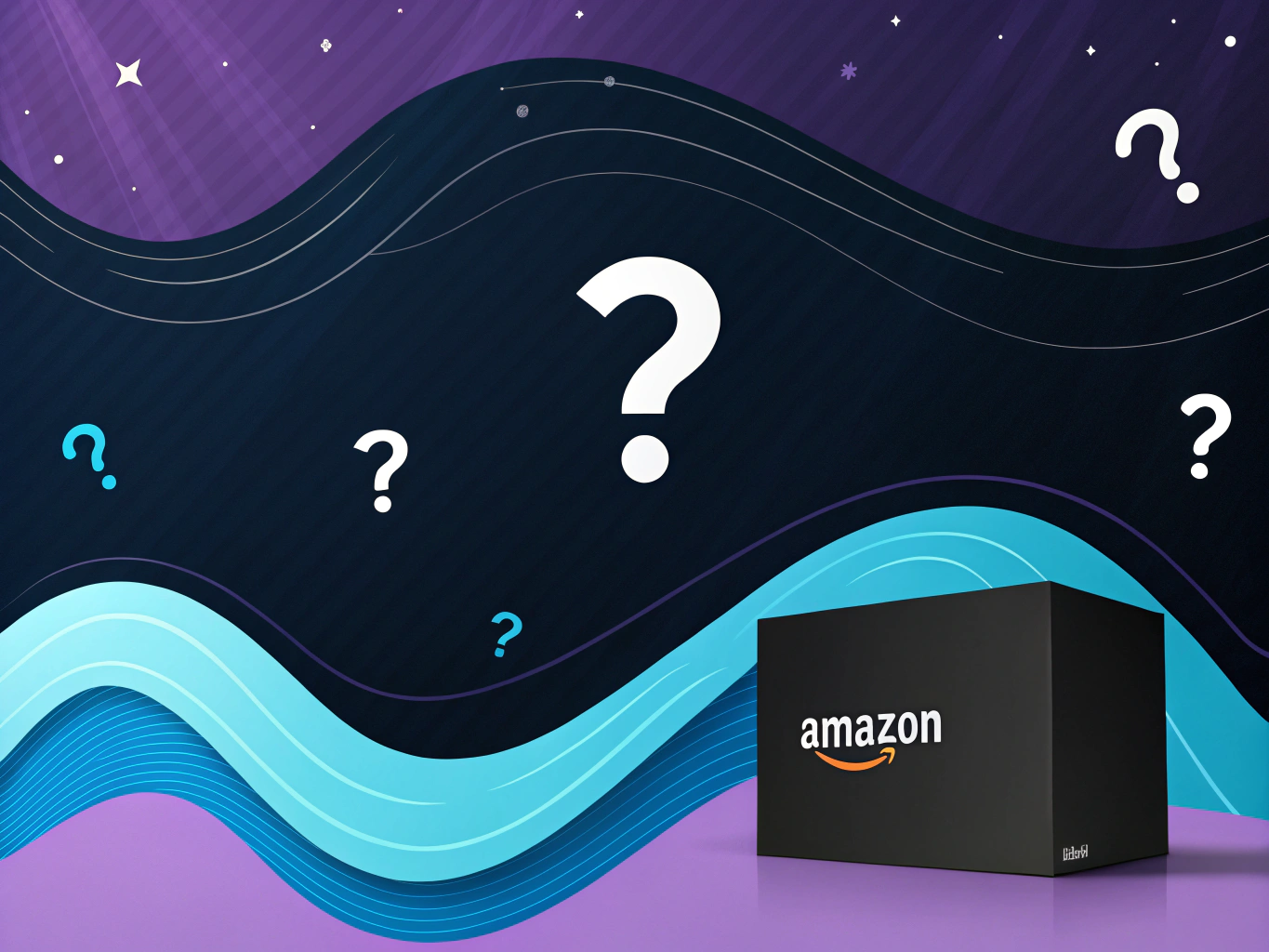The world of Amazon selling feels a bit like navigating the Wild West sometimes. One day you’re cruising along, selling your products without a hitch, and the next – BAM! – you discover your category just got restricted or a brand suddenly became gated. I’ve been there, and let me tell you, it’s not fun scrambling to figure out what you can and can’t sell.

But here’s the thing: Amazon’s marketplace isn’t actually as complex as it seems. Think of it like a really strict nightclub – there are VIP sections (gated categories), dress codes (product requirements), and bouncers (Amazon’s algorithm). Once you know the rules, getting in becomes a whole lot easier.
Understanding Amazon’s Marketplace Structure in 2025

Let’s get real about what you’re allowed to sell on Amazon these days. The platform has evolved from its humble bookstore beginnings into something that would make Jeff Bezos’s 1994 self do a double-take. Today, it’s less about what you can sell and more about how you need to qualify to sell certain items.
The Two Paths: Individual vs. Professional Seller
Picture this: you’re at a fork in the road. One path (Individual Seller) is perfect for testing the waters – you’ll pay $0.99 per sale, ideal if you’re selling less than 40 items monthly. The other path (Professional Seller) costs $39.99 monthly but opens up a whole new world of selling opportunities and tools. It’s like choosing between a bicycle and a car – both will get you there, but one’s built for scaling.
FBA vs. FBM: The Great Debate
This isn’t just about storage and shipping – it’s about your entire business model. With Fulfillment by Amazon (FBA), you’re essentially hiring Amazon as your warehouse manager, shipping department, and customer service team all in one. Fulfillment by Merchant (FBM) keeps you in control but requires more hands-on work. Neither is inherently better – it’s about what fits your business model.
Understanding Amazon’s Marketplace Structure: The Good, Bad, and Occasionally Weird
Let’s be real—Amazon’s marketplace is like that massive department store that somehow keeps expanding into new dimensions. You know, the one where you walk in looking for socks and walk out with a bread maker, three books about space travel, and wondering if you really need that solar-powered garden gnome.
What are you allowed to sell on Amazon? The short answer: quite a lot, actually. The long answer? Well, that’s where things get interesting.
The Basic Building Blocks: Seller Account Types
First things first—you’ve got two flavors of seller accounts: Individual (the starter pack) and Professional (the full enchilada). Individual accounts are perfect if you’re planning to sell fewer than 40 items monthly. Think of it as Amazon’s version of a lemonade stand—perfect for testing the waters without diving into the deep end.
Professional accounts, on the other hand, are like getting the keys to the kingdom. At $39.99 monthly, they unlock features that make serious selling possible: bulk listing creation, advanced reporting, and the ability to win that coveted Buy Box. Plus, you don’t pay the $0.99 per-item fee that Individual sellers do.
Open Categories: Where the Party’s At

Some categories on Amazon are like an open house party—anyone can join. These “ungated” categories are your ticket to starting without jumping through too many hoops. Here’s where you can dive right in:
- Books (because knowledge is power, and apparently, quite profitable)
- Home & Kitchen (everyone needs spatulas and throw pillows)
- Toys (outside Q4—holiday season is a different beast)
- Sports & Outdoors (from yoga mats to camping gear)
- Office Products (because someone’s got to sell those staplers)
- Pet Supplies (our furry friends need stuff too)
Show Me The Money: Success Rates by Category
Here’s something most guides won’t tell you: not all categories are created equal. Books might be easy to get into, but with average margins around 25-35%, you’re playing a volume game. Meanwhile, Home & Kitchen products can sport margins of 40-70% if you play your cards right.
The real gold mine? Private label products in these open categories. I’ve seen sellers crush it with simple products like silicone kitchen utensils or specialized pet grooming tools, hitting profit margins north of 50% when they nail their sourcing and marketing.
Restricted Categories: The VIP Room of Amazon
Think of restricted categories as Amazon’s VIP lounges. You need to prove you’re worthy before they let you in. But once you’re in? That’s where some serious money can be made.
Getting Past the Velvet Rope: Category Approval Process
The approval process isn’t just paperwork—it’s Amazon’s way of saying “show us you mean business.” You’ll need:
- Professional seller account (obviously)
- Invoices from manufacturers or authorized distributors
- Images of your products and packaging
- Sometimes, additional certifications or licenses
The High-Roller Categories
These restricted categories often have higher barriers to entry, but they also tend to have:
- Luxury Brands (where margins can exceed 100%)
- Jewelry (high value, low shipping costs)
- Beauty & Personal Care (recurring purchases = steady income)
- Grocery & Gourmet Food (massive market, but handle with care)
The No-Go Zone: What’s Absolutely Off Limits

Some things just don’t fly on Amazon. No matter how creative you get, these are absolute no-nos:
- Anything illegal (duh)
- Hazardous materials (no breaking bad)
- Prescription drugs (leave that to the professionals)
- Weapons and firearms (not Amazon’s style)
- Offensive materials (keep it classy)
Brand Restrictions: The Invisible Force Field
Here’s where things get tricky. Even in open categories, specific brands might be restricted. Nike? Good luck. Apple? Don’t even think about it. These brands are like the cool kids’ table in high school—you need an invitation to sit there.
Quality Standards: Because Amazon’s Not Playing Around
Amazon’s product requirements aren’t suggestions—they’re more like the laws of physics in their marketplace. Break them, and you’ll find yourself in a world of hurt. For more details, check out Amazon’s official guidelines.
The Non-Negotiables
- Safety standards that would make your mother proud
- Packaging that can survive a journey through what seems like seven dimensions
- Labels that actually tell people what they’re buying
- Condition guidelines that mean “Like New” better be pretty darn close to new
Legal Stuff (Because Lawyers Need Jobs Too)
Remember those FDA regulations you never thought you’d need to know about? Well, if you’re selling anything that goes in or on a human body, you better start studying. Environmental regulations, consumer safety laws—they’re all part of the game now.
The beauty of all this complexity? It weeds out the folks who aren’t serious about building a real business. And for those of us who are willing to put in the work? That’s where the magic happens.
Advanced Selling Opportunities on Amazon: Beyond the Basics
Look, I’ve seen countless sellers get stuck in the “me too” trap – listing basic products in oversaturated categories and wondering why they’re not seeing the results they want. But here’s where it gets interesting: Amazon’s marketplace is constantly evolving, creating new opportunities for sellers who know where to look.
Specialized Amazon Programs That Actually Work
Amazon Handmade isn’t just another Etsy – it’s a completely different beast. While the entry requirements are stricter (you’ll need to prove your items are actually handcrafted), the profit margins can be substantially higher. I’ve seen artisans pull in 40-50% margins consistently, compared to the 20-30% you might see in standard retail categories.
Amazon Renewed is another goldmine that most sellers overlook. Sure, dealing with refurbished products sounds complicated, but here’s the thing: with proper quality control and documentation, you can build a sustainable business with fewer competitors and loyal customers who appreciate value.
What Are You Allowed to Sell on Amazon’s Premium Programs?

The rules change when you’re dealing with premium programs. Amazon Business, for instance, isn’t just regular B2C selling with a fancy name. You’re allowed to sell bulk quantities, offer special business pricing, and even set up quantity discounts – things you can’t do in the regular marketplace.
If you’re looking for alternative ways to grow, consider exploring Amazon Influencer Storefront examples, where influencers showcase curated products to drive sales through affiliate marketing.
Private Label: The Double-Edged Sword
Everyone talks about private label like it’s the holy grail of Amazon selling. And while it can be incredibly profitable, it’s not as simple as slapping your logo on a generic product from Alibaba (trust me, I’ve seen that strategy fail spectacularly).
What you’re allowed to sell under private label comes down to three things:
– Your trademark status
– Category restrictions
– Your ability to prove product quality and safety compliance
Risk Management: The Part Nobody Wants to Talk About
Here’s something that keeps me up at night: I’ve seen successful sellers lose their accounts overnight because they didn’t take risk management seriously. What are you allowed to sell on Amazon isn’t just about product categories – it’s about understanding and following Amazon’s ever-changing policies.
Account Protection Strategies That Actually Work
First off, forget what you’ve heard about gaming the system. The best account protection is boring but effective:
– Regular policy review and compliance checks
– Proactive customer service
– Detailed record-keeping
– Quick response to any performance notifications
I’ve seen sellers try to circumvent these basics with “clever” tricks, only to end up with suspended accounts and lost inventory. Don’t be that seller.
Quality Control: Your Insurance Policy
Quality control isn’t just about making sure your products aren’t defective. It’s about creating systems that scale. Tools like Refund Genie can help sellers recover lost profits from Amazon FBA reimbursements, ensuring that you don’t leave money on the table. This means:
– Regular supplier audits
– Sample testing for each batch
– Documentation of quality processes
– Customer feedback monitoring and response protocols
Tools and Resources: Separating the Essential from the Nice-to-Have
The tool marketplace for Amazon sellers is like the wild west – everyone’s promising gold, but most are selling snake oil. After testing countless tools (and wasting more money than I’d like to admit), here’s what actually matters:
Research and Analytics That Matter
You don’t need every tool under the sun. Focus on:
– Reliable product research tools (Helium 10 or Jungle Scout)
– Inventory management systems
– Pricing automation tools
– Customer feedback management
Support Networks Worth Your Time
The best resources aren’t always the most obvious ones. Skip the guru courses and focus on:
– Amazon’s own Seller University
– Category-specific seller groups
– Local ecommerce meetups
– Industry-specific trade associations
Future Trends: What You’ll Be Allowed to Sell Tomorrow

The future of Amazon selling isn’t just about new categories – it’s about new ways of selling. With Amazon generating billions in revenue, you might be wondering, how much does Amazon make a day? Reports suggest that Amazon’s daily earnings surpass hundreds of millions, making it one of the most lucrative marketplaces in the world.
We’re seeing emerging trends in:
– Sustainable and eco-friendly products
– Smart home integration
– Customizable products
– Direct-to-consumer brands transitioning to Amazon
Technology and Innovation: The Real Game Changers
AI isn’t just changing how we list products – it’s transforming what we can sell and how we sell it. Imagine being able to offer real-time product customization, or using augmented reality to show customers how your product would look in their home. This isn’t sci-fi anymore – it’s happening now.
Expert Tips: What I Wish Someone Had Told Me
After years of selling on Amazon and helping others do the same, here’s what really matters:
Getting Started Right
Don’t just ask what you’re allowed to sell – ask what you should sell. Consider:
– Your expertise and interests
– Available capital
– Time commitment
– Competition levels
– Long-term scalability
Scaling Successfully
Scaling isn’t just about selling more – it’s about selling smarter. Focus on:
– Category diversification
– International expansion
– Brand building
– Automation and systems
The Bottom Line: Making It Work in 2025
Success on Amazon in 2025 isn’t just about knowing what you’re allowed to sell – it’s about understanding how to sell it right. The marketplace is more competitive than ever, but it’s also more sophisticated. The winners won’t be the ones who just follow the rules – they’ll be the ones who master them.
Remember: Amazon isn’t just a marketplace – it’s an ecosystem. Your success depends on understanding not just the what, but the how and why of selling. Start with the basics, master your category, and always keep learning. The opportunities are there – you just need to be ready to seize them. For tools and resources that can help, explore our tool marketplace for Amazon sellers.
Related Articles:
- How to Sell Wholesale: A Beginner’s Guide to Success
- eBay Cancel Bid: Quick Guide to Retract Your Offer – ProductScope AI
- eBay Authenticity Guarantee: A Buyer’s Complete Guide
Frequently Asked Questions
What are you allowed to sell on Amazon?
On Amazon, you are allowed to sell a wide variety of products across numerous categories, such as books, electronics, clothing, home goods, and more. However, each category may have specific guidelines and requirements that sellers must adhere to, and some categories may require approval before you can list items in them.
What are the products that cannot be sold on Amazon?
Products that cannot be sold on Amazon include illegal items, hazardous goods, and items that violate Amazon’s policies, such as replicas, pirated media, and stolen goods. Additionally, certain products like alcohol, tobacco, and firearms are generally prohibited or subject to strict regulations and approvals.
Can you sell anything as an Amazon seller?
As an Amazon seller, you cannot sell just anything; all products must comply with Amazon’s selling policies and guidelines. Certain items are restricted or prohibited, and sellers need to ensure that their products meet all legal and regulatory requirements.
Can I make $1000 a month on Amazon?
Yes, it is possible to make $1000 a month on Amazon, though it depends on factors like the products you sell, your pricing strategy, and how effectively you market your store. Success requires diligent research, competitive pricing, and effective inventory management.
Are you allowed to sell on Amazon?
Yes, you are allowed to sell on Amazon as long as you create a seller account and adhere to the platform’s selling policies and guidelines. There are two primary types of accounts: Individual and Professional, each catering to different levels of selling needs.
About the Author
Vijay Jacob is the founder and chief contributing writer for ProductScope AI focused on storytelling in AI and tech. You can follow him on X and LinkedIn, and ProductScope AI on X and on LinkedIn.
We’re also building a powerful AI Studio for Brands & Creators to sell smarter and faster with AI. With PS Studio you can generate AI Images, AI Videos, Chat and Automate repeat writing with AI Agents that can produce content in your voice and tone all in one place. If you sell on Amazon you can even optimize your Amazon Product Listings or get unique customer insights with PS Optimize.
🎁 Limited time Bonus: I put together an exclusive welcome gift called the “Formula,” which includes all of my free checklists (from SEO to Image Design to content creation at scale), including the top AI agents, and ways to scale your brand & content strategy today. Sign up free to get 200 PS Studio credits on us, and as a bonus, you will receive the “formula” via email as a thank you for your time.




